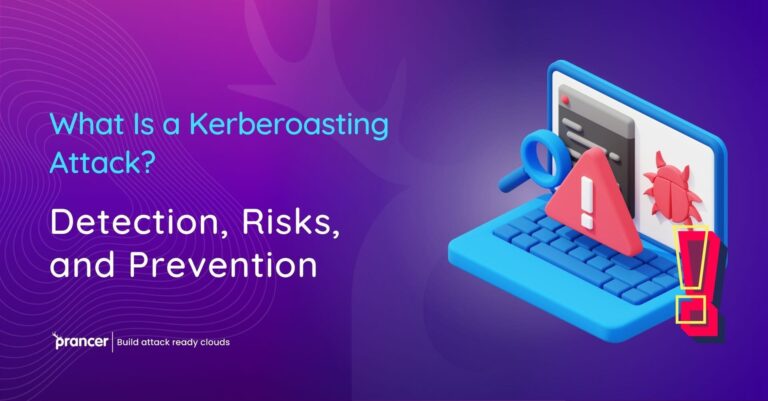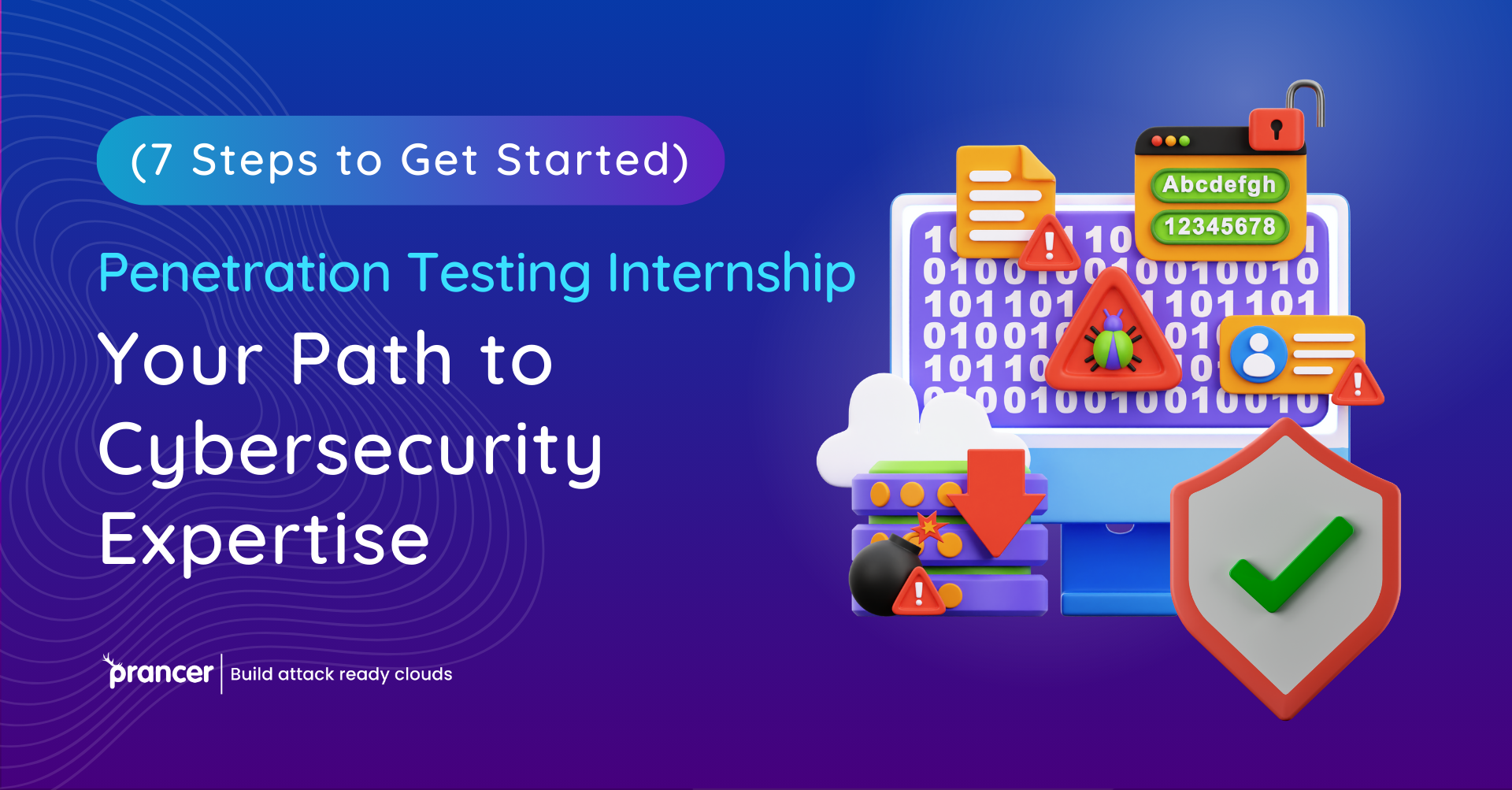

In the realm of the digital whirlwind we find ourselves in, cybersecurity stands as a towering pillar. With cyber threats morphing continuously, the cry for adept warriors in the cybersecurity arena is louder than ever. If the world of cybersecurity intrigues you, plunging into a pentesting internship, fondly known as a pentesting internship, could be your golden ticket. It opens the door to hands-on exploration and mastery. Through this narrative, we’ll navigate the seven pivotal steps that pave the road to your cybersecurity prowess via a pentesting internship. Also, we’ll delve a tad into the universe of automated penetration testing and shed light on how Prancer, a vanguard in the cybersecurity domain, can be your companion in this quest for excellence.
Step 1: Penetration Testing ABCs
The cornerstone of a robust cybersecurity career is a solid grasp of penetration testing fundamentals. This entails immersing oneself in the understanding of diverse attack vectors, vulnerabilities, and the arsenal of tools crafted for system assessment and fortification. Prancer extends a rich repository of training material and workshops to guide you through establishing a sturdy base in penetration testing.
Step 2: Tech-Savvy Territory
A noteworthy penetration tester is a maestro of various programming dialects, operating systems, and network blueprints. Devote hours to hands-on tinkering with tools such as Nmap, Wireshark, and Metasploit. Prancer’s internship avenue opens up a playground with state-of-the-art tech and real-world quandaries to polish your technical finesse.
Step 3: Badge of Cybersecurity Honor
Certifications like CompTIA Security+, CISSP, and CEH are your badges of honor in the cybersecurity community. With Prancer’s mentorship during your pentesting internship, prep up for these certifications and notch up the accolades necessary to shine in your professional voyage.
Step 4: Networking Nirvana
In the cybersecurity cosmos, networking isn’t just about computers. Dive into online discussions, grace cybersecurity symposiums, and forge connections with the crusaders in the industry. Prancer nudges interns to engage in industry congregations and cultivates a breeding ground for collaborative enlightenment.
Step 5: Resume and Repository
Craft a resume and portfolio that’s a mirror to your skills, certifications, and any penetration testing escapades you’ve embarked on. Prancer lends a helping hand in sculpting an arresting portfolio and bridges the gap between you and potential recruiters in the cybersecurity sphere.
Step 6: Internship Impression
Scour for pentesting internship openings at esteemed establishments like Prancer. Tailor your application to echo your zeal, prowess, and allegiance to cybersecurity. With Prancer’s internship framework, bask in mentorship and real-world missions that enrich your practical know-how.
Step 7: Automated Penetration Testing Terrain
Automation is the linchpin in contemporary cybersecurity. Harness the power of automated penetration testing tools to sharpen and elevate your testing strategies. Prancer’s platform unfolds automated penetration testing solutions, a perfect cohort to your manual testing adeptness.
For those interested in a career in cybersecurity, it’s important to begin with an internship focused on testing the strength of computer systems. It is crucial for newcomers looking to excel within this key industry. Important things to do are learning the basics of testing security, getting better with tools like Nmap, Wireshark and Metasploit. Also get big certifications such as CompTIA Security+, CISSP and CEH. Prancer, a big name in cybersecurity gives really useful training and helps you learn. They also provide chances to do real work experience. Making good connections in your career and creating an impressive resume are also very important actions to take. Learning how to use tools that check for hackers is very important in modern internet safety. This must be done well. With Prancer’s help, this complete plan helps people get ready for a good job in changing online safety world.
Understanding the Cybersecurity Landscape: Start your path by familiarizing yourself with the current developments, widely known threats and cybersecurity environment as a whole. This understanding lays a strong basis of forming successful penetration strategies.
Technical Skill Enhancement: Develop key technical skills required for penetration testing. Study scripting languages such as Python, get used to Linux environment and network setup. Prancer’s resources provide an appropriate environment for developing such technical skills.
Hands-On Practice with Tools: Learn to use professional methods of penetration testing utilising tools such as Burp Suite, OWASP ZAP and automatic scanners. Practice in virtual environments to know their features and constraints.
Automated Penetration Testing Techniques: Understand the specifics of APT. This includes determining how tools such as Prancer can automate processes including identifying vulnerabilities, fuzz testing and reporting.
Developing a Security Mindset: Develop a security professional’s mindset. This includes having the mindset of a hacker to explore on how systems are breached and what measures can be applied in avoidance.
Learning From Real-World Scenarios: Practice activities that simulate the real world. It may include CTF (Capture The Flag) challenges, which are results simulating real cybersecurity portals.
Advanced Certifications and Training: Advanced certifications include Offensive Security Certified Professional (OSCP) and Certified Penetration Testing Engineer (CPTE). These certificates are valued in the trade and emphasize on practical skills.
Building a Professional Network: Network with professionals in the industry. Visit cybersecurity conferences, forums and online communities. Networking can shed light on the trends in an industry and job opportunities.
Specializing in Niche Areas: Specialize in fields, such as cloud safety; mobile application testing or IoT security. Specialization ensures that employers are interested in hiring people who have expertise knowledge on specific fields.
Contribution to Cybersecurity Communities: Try to contribute with open source projects, or write blogs about your findings and personal experiences. It not only makes your learning better, but also contributes to the favorable building of reputation in cybersecurity community.
Understanding Compliance and Legal Aspects: Become conversant with the legal and compliance side of penetration testing. Getting familiarized with GDPR, HIPAA and other standards is very important for conducting ethical but compliant Pen Tests.
Utilizing Prancer for Automated Testing: With Prancer’s automated tools, perform high-quality penetration tests. Understand how to incorporate these tools in the testing procedure for better vulnerability assessments.
Adapting to Emerging Technologies: Learn new technologies such as blockchain, AI and cloud computing. It is critical to understand these technologies to test contemporary and complicated systems.
Improving Soft Skills: Practice the soft skills such as communication, problem-solving and teamwork. These skills are necessary for successfully conveying findings to non-technical users and working in a team.
Participating in Bug Bounty Programs: Participate in bug bounty programs to practice your skills for actual purpose. It is a priceless experience and can also be lucrative.
Learning from Cybersecurity Incidents: Recent cases of cybersecurity violations and breaches should be analyzed. The ways in which such incidents occurred and how they could have been avoided are a good educational tool.
Maintaining Ethical Standards: Penetration testing should always follow ethical standards. However, illegal testing or use of tools can bring not only legal implications but also certain professional loss.
Seeking Mentorship: Seek out mentors who can help you in career development. Mentorship can offer useful insights, advice on your performance and development.
Building a Strong Online Presence: Develop a robust online identity with LinkedIn, GitHub, or any other personal website. Present your products, certificates and participation in the cybersecurity society.
Evaluating Job Opportunities: Evaluate job opportunities carefully. Seek positions that provide development, growing opportunities and fit your aspirations.
Continuous Learning and Adaptation: In the cybersecurity field, changes are happening every day; therefore commit to learning and stay updated on what’s new in the industry.
Prancer’s Continuous Support: Use continual help and assets from Prancer for real-time automated penetration testing as well as updates about cloud security.
This holistic approach, using both manual and automated penetration testing methods, equips people to become professional veterinarians in a rapidly changing profession of cybersecurity.
Conclusion:
Launching into a pentesting internship is akin to setting sail towards cybersecurity sagacity. Adhering to these seven steps, you’re not just stepping, but leaping towards a fruitful cybersecurity career. With Prancer by your side, offering tutelage, mentorship, and a ticket to cutting-edge technology, your pentesting internship is the stepping stone to becoming a cybersecurity savant. Your journey commences with a single step – a pentesting internship beckoning at Prancer!
